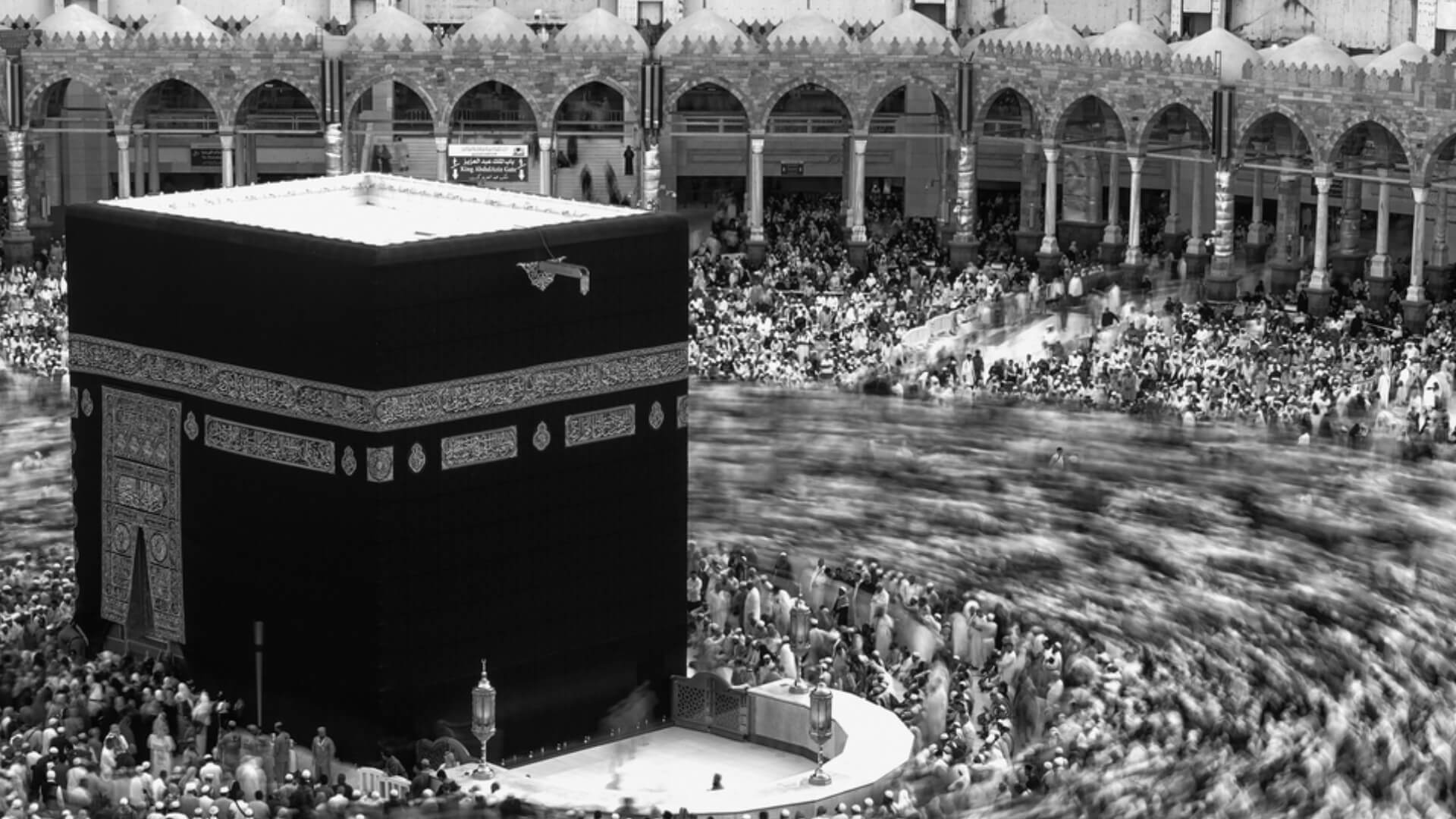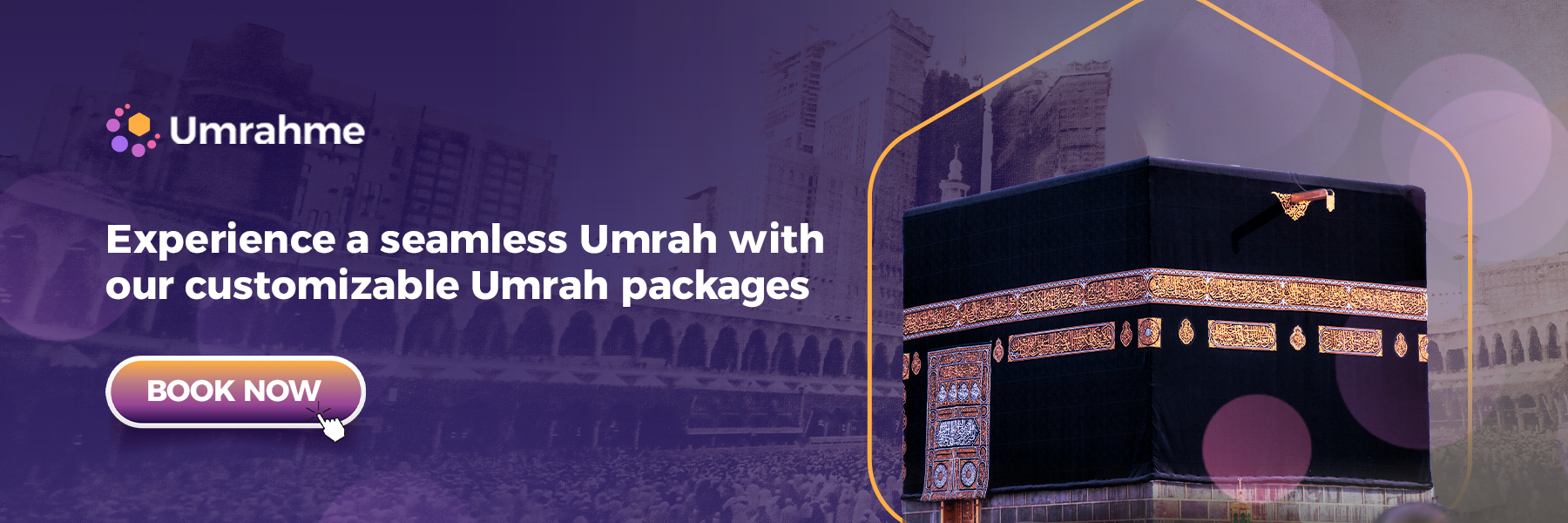Tawaf: Meaning, History, Benefits, and How to Perform it in Hajj and Umrah

Let’s deep dive into the heart of the Islamic pilgrimage – the sacred ritual of Tawaf. This blog aims to shed light on the purpose, process, and profound spiritual significance of Tawaf, an act performed by millions of Muslims during Hajj and Umrah.
Whether you’re preparing for your first pilgrimage journey or just intrigued about this Islamic practice, keep reading to gain deeper insights into this essential ritual of faith.
What does Tawaf mean?
Tawaf, a fundamental ritual in Hajj and Umrah, finds its roots in the Arabic word طاف, implying “to walk around in circles”. This journey around Al-Ka’aba involves seven rounds, taking an anti-clockwise direction, each round (even called Shawt) starting and finishing at the Black Stone.
This rhythm of walking around the Ka’aba seven times stands as a literal translation of Tawaf but on a deeper level, it signifies the essence of spiritual dedication, unity, and devotion in the heart of believers.
Get the complete guide on Umrah and its rituals here.
What is the history of Tawaf?
Before the advent of Islam, Tawaf existed, but it was performed under different circumstances. During the age of ignorance or Jahiliyyah, people used to circle the Ka’aba naked, believing that their sins contaminated their clothes. For them, it was a practice passed down by their ancestors.
Contrary to others, the Quraysh tribe engaged in Tawaf while dressed in their everyday attire. Non-Quraysh individuals who desired to partake in Tawaf would borrow clothing from a member of the Quraysh tribe. It is worth noting that women performed Tawaf during the night. Despite these traditions, some held misguided beliefs asserting that they were simply following the practices of their ancestors, when in fact they were adhering to Allah’s commands and regulations.
With the onset of Islam, changes were brought in. People were ordered to cover themselves appropriately, focus on cleanliness, and properly cover their private parts while performing every prayer. It completely altered how Tawaf was performed.
يَا بَنِي آدَمَ خُذُوا زِينَتَكُمْ عِندَ كُلِّ مَسْجِدٍ وَكُلُوا وَاشْرَبُوا وَلَا تُسْرِفُوا ۚ إِنَّهُ لَا يُحِبُّ الْمُسْرِفِينَ
Lastly, one year before the Farewell Hajj of Prophet Muhammad ﷺ, Abu Bakr Al Sedeeq was asked to make an announcement. The announcement stated that no pagan and no naked person was allowed to perform Hajj or Tawaf. This demarcated a crucial change in the history of Tawaf.
To appreciate the depth of Umrah rituals, one needs to understand the ritual of Sa’i, another crucial part of this spiritual journey. Explore more about the symbolic walk between the hills of Safa and Marwa in our blog post: Understanding Sa’i – History, meaning, and its significance.
How to perform Tawaf?
Step 1:
You need to make sure that you are in the state of Wudu during the entire Tawaf. You also need to have the intention (Niyyah) either to recite the Dua’a or to retrieve your intention in your heart.
Step 2:
Begin and end your Tawaf at Al-Hajar al-Aswad (The Black Stone). You will find a green light on your right side which indicates the starting point for Tawaf.
Men should uncover their right arm when beginning Tawaf. Keep the Ka’aba to your left moving in an anti-clockwise direction. Begin each round of Tawaf by raising your right hand and gesturing towards Al-Hajar al-Aswad and recite,
بِسْمِ اللَّهِ, اللّهُ أكبر
Bismillah, Allahu Akbar
“In the name of Allah, Allah is the Greatest.”
Although there are no specific supplications during Tawaf, personal dua and remembrance of Allah may also be offered during Tawaf.
Step 3:
When you reach the Yemeni corner, the corner before the Black Stone, recite the dua,
رَبَّنَا آتِنَا فِي الدُّنْيَا حَسَنَة ً وَفِي الآخِرَةِ حَسَنَة ً وَقِنَا عَذَابَ النَّار
Rabbana Aatinaa Fiddunyaa H’asanata
Wa Fil Aakhirati H’asanata Wa Qinaa A’d’aab anNaar
War-zuqna Al-Jannah Ma’al Abrar, Ya Aziz, Ya Gaffar
“Our Lord, grant us good in this life and good in
the hereafter and save us from the punishment
of the Hellfire. And grant us Paradise with the
righteous, O Mighty, O Forgiving.”
Recite it until you reach the Black Stone. At this point, you have completed your first round of Tawaf.
Step 4:
To complete the Tawaf ritual, you need to circle the Ka’aba seven times. Men can cover their right arm after completion of Tawaf and proceed towards Maqam Ibrahim.
What to recite during Tawaf?
As you perform Tawaf, you may engage in Dua’a, Dhikr, or send prayers on the Prophet Muhammad ﷺ. There’s no requirement to recite prayers from a book, as a mere repetition of words can keep you from truly experiencing the ritual. However, for those desiring more structure, refer to the Duas mentioned above.
Rather, open your heart to Allah, ask His forgiveness, and seek His mercy. Feel free to make your Dua’a in your language, in the words and manner that you connect with the most. Ask Allah to fulfill your desires. Always remember that Dua’a is accepted during Tawaf. It’s a golden opportunity you wouldn’t want to miss.
Read more about Dua and Dhikr during Tawaf and Umrah.
What are the different types of Tawaf?
While the fundamental rites remain consistent, Tawaf incorporates variations based on specific occasions during Umrah or Hajj. The three primary types include:
- Tawaf Al-Qudum: Also known as the ‘Arrival Tawaf,’ this kind of signals the pilgrims’ entry into Al Ka’aba.
- Tawaf Al-Ifadah: Considered a compulsory ritual of Hajj, this Tawaf is observed between the dawn of the 10th Dhul Hijjah and the sunset of the 12th Dhul Hijjah. It takes place after the pilgrims have exited the state of Ihram, and just before they head back to Mina to perform Rami Al-Jamarat.
- Tawaf Al-Wada’a: Widely known as the ‘Farewell Tawaf’ or Tawaf Al-Sadr, pilgrims perform this Tawaf as the concluding act of Hajj.
How many Tawafs are done during Umrah?
In the course of Umrah, which is specifically observed outside Hajj season or by those intending to perform Hajj Al-Tamattu, Tawaf Al Umrah is undertaken. It is very much akin to the practice of Tawaf Al-Qudum, with the primary distinction being the intention set to perform Umrah and the wearing of Ihram.
Read more on The Role of Umrah in Strengthening the Muslim Ummah
What are the benefits of Tawaf?
Tawaf has many virtues, all are mentioned in Prophet’s Muhammad’s ﷺ narrations.
Abdullah ibn Umar narrates: The Prophet ﷺ said:
“120 Mercies descend daily upon the House of Allah, 60 of which are for those who are performing Tawaf, 40 for those who are performing Salah, and 20 for those who gaze at the House of Allah.”
He also reports: I heard the Messenger of Allah ﷺ say:
“Whoever circles the Ka’aba seven times (Tawaf) and prays two rak’ahs will have a reward as if he has freed a slave. A man does not raise his foot and bring it back down except that ten good deeds will be written for him, ten bad deeds will be erased, and he will be raised by ten degrees.”
He further narrates:
“Whomsoever makes 50 Tawafs of the Kaaba (ie. fifty by seven rounds), will be free of all his sins, just as the day his mother gave birth to him.”
Tawaf, the act of circling the Ka’aba seven times, is a key part of Umrah and Hajj. It’s a deep-rooted symbol of spiritual connection and reflection. It has evolved over time under Islam, focusing on purity, humility, and its profound meaning. The rewards of performing Tawaf are immense, as shared in the Hadiths, offering forgiveness and spiritual elevation.
If you’re interested in embarking on this spiritual journey, we offer excellent Umrah packages, as well as Umrah + Holiday packages tailored to your needs. These packages provide great value and convenience, ensuring a seamless and memorable experience.
Don’t wait! Book now to secure the best deal and make the most of this sacred journey.









